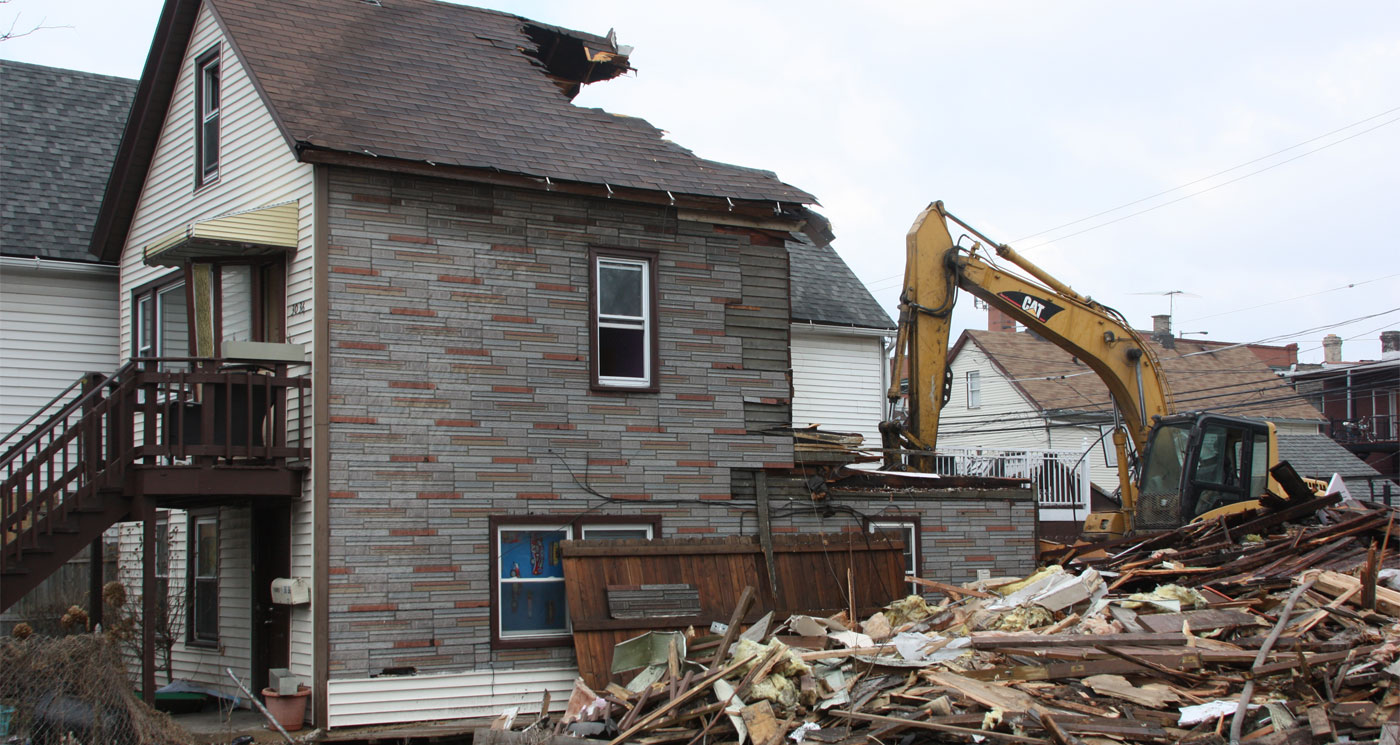
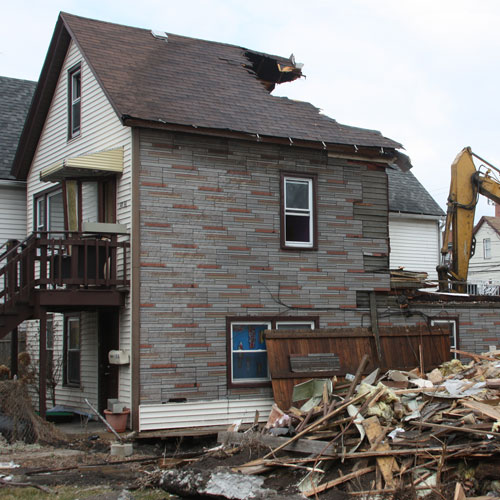
Photo Matt Bergstrom
Analyzing Teardowns of Workers Cottages
Several of Chicago's neighborhoods have undergone redevelopment in the past decade, losing many older residential buildings. Logan Square has received media attention for a large number of teardowns making way for higher-priced development, especially near the 606 trail. In March 2021, the Chicago City Council approved a temporary ordinance to impose a $15,000 surcharge on demolition permits of residential houses near the 606 trail in Logan Square, Humboldt Park, Bucktown and Wicker Park, as well as for demolitions in Pilsen.
Anyone walking down the street in these areas may notice recently-constructed houses, especially the glass and cinder-block boxes that stand in stark contrast to the older gable-roofed houses in the neighborhood. To gather quantitative data about how the housing stock is changing in these areas, the Chicago Workers Cottage Initiative analyzed the available city demolition permit data from 2006 to 2020. Using historic Streetview and satellite imagery as well as historic insurance maps as references, we categorized the structures which were demolished in Logan Square and Avondale by building use or type.
During these 15 years, 420 demolition permits were issued in Logan Square. There are roughly 8900 structures in the neighborhood, meaning that a little less than 5% of the existing buildings in Logan Square were demolished during this time period. Almost half of the buildings demolished were workers cottages. Combined with frame 2-flats — mostly the gable-roofed frame two-flats which are similar to workers cottages — these two house types account for over three-quarters of all structures lost in the neighborhood during this time period.
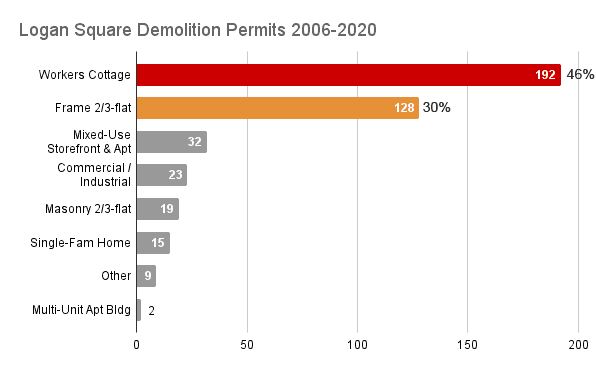
In Avondale during the same time period, 205 demolition permits were issued. Out of a little more than 6,300 buildings in this area, roughly 3% were demolished. Again, the highest number of the demolition permits were for workers cottages, with frame two-flats here behind a large number of light-industrial and small commercial building demolitions.
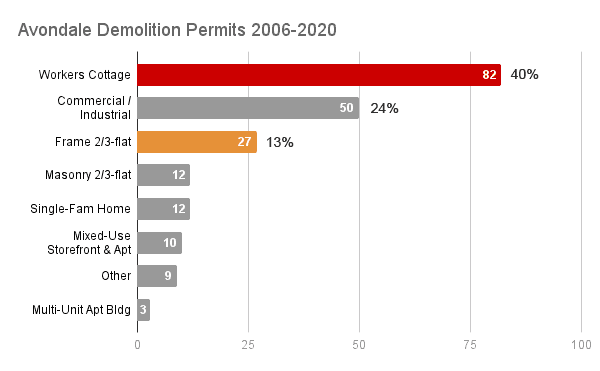
Charting the demolition permits by year in Logan Square shows the wave of redevelopment after the 2008 recession rising to a high point in 2017 when 27 cottages and 24 frame two-flats were lost. Though the numbers may have declined after that crest, it is difficult to predict how the post-pandemic real-estate market will affect the future rate of teardowns.
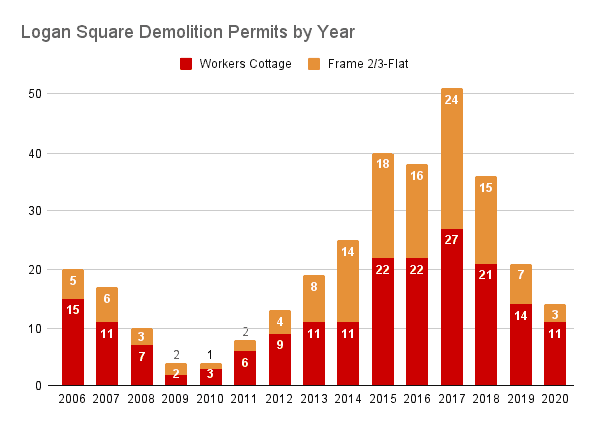
The fewer demolitions in Avondale were more evenly spread across the time period, without such dramatic ups and downs.

Looking at historic Streetview imagery, we rated the apparent quality of the cottages and frame two-flats before they were demolished. The data is based on a subjective assessment of the outside appearance of the building, but provides some evidence that a majority of the teardown houses appear to be in good or decent shape and were demolished because a developer found it more profitable to build something else in their place. A handful of houses were notable for having intact decorative woodwork from the nineteenth century, a clue that they'd been maintained especially carefully over the past century. More than half of houses appeared to be in sturdy well-cared-for condition, though their original details might be covered by modern siding or might need a coat of fresh paint. About a third of the houses appeared less cared for, with deteriorating siding or trim visibly in need of replacement. The poorest-condition houses had readily-visible problems making demolition a necessity. The loss of so many relatively good-condition houses represents an environmental waste: of materials sent to the landfill and used in new replacement construction. It also represents a loss of affordable housing for families who find these neighborhoods increasingly overpriced and a loss of neighborhood history and architectural character.
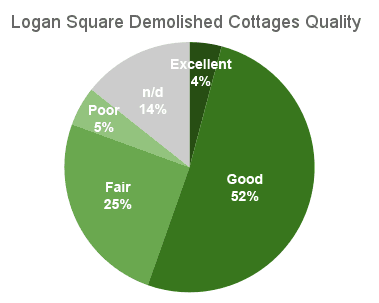
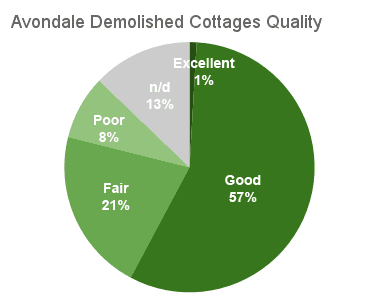
A map of the demolished cottages and frame 2-flats shows high concentrations of teardowns on the south end of Logan Square near the 606 Trail, and also on the east side of the neighborhood on the blocks near Western Avenue. In Avondale the demolitions were more dispersed, with a slight grouping of demolitions in the area near the Belmont Blue Line station.
Replacing workers cottages
What is being built in place of these lost houses? The majority of new construction which replaced demolished workers cottages and frame two flats in both neighborhoods were single-family homes. About a quarter of the replacements were three- or four-story condo buildings built on single and double lots. A tenth or less of the demolitions were now parking lots or an empty lot not yet replaced by new construction.
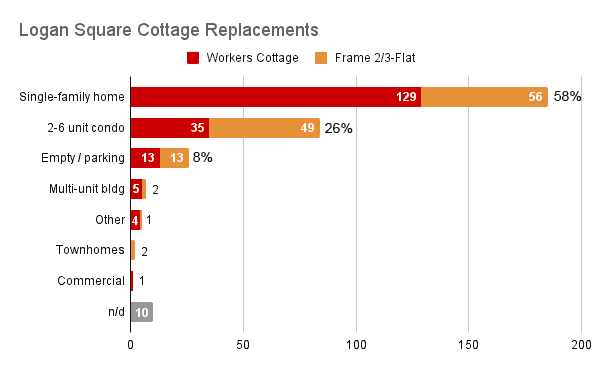
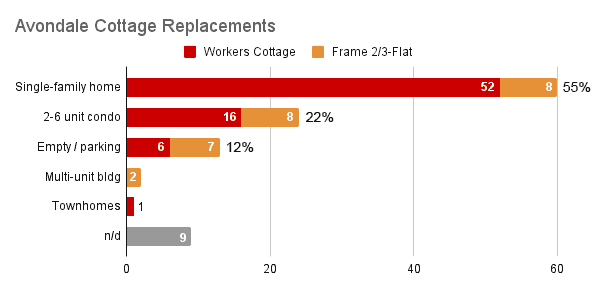
Source of infographics: Matt Bergstrom & Liz Potamites
Most of the buildings replacing demolished cottages and two-flats in Logan Square and Avondale are built to the maximum size allowable under the underlying zoning of each property. The most common zoning category in these neighborhoods is RS-3, which allows construction of 2-story single-family homes. Some blocks and portions of blocks are zoned RT-4, which allows 3- to 4- story condo buildings, or B3-1 on busier commercial streets, which allows similar condo construction above retail storefronts.
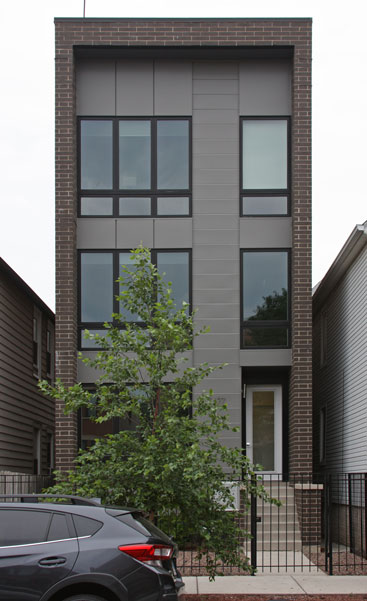
3-unit condo built under RT-4 zoning
In both neighborhoods, most workers cottage teardowns are replaced by single-family homes. Cottage-style two-flat teardowns are equally likely to be replaced by single-family homes or 2-6 unit condos.
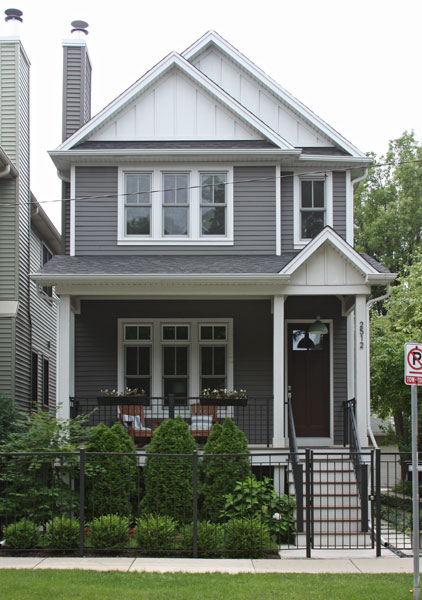
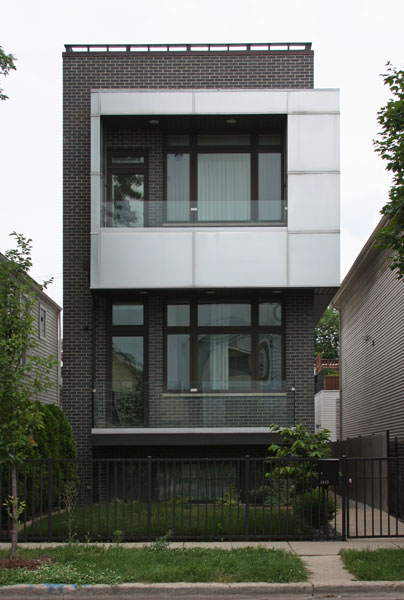
Single-family houses built on sites replacing demolished workers cottages
Is a newly-constructed single-family home simply a larger equivalent of the nineteenth-century workers cottage that once stood here? Is a 3-unit condo simply a modern version of the 3-unit frame building it replaced as well? Setting aside questions about how new traditional or modern-style houses might fit in or change the character of an individual street, one qualitative change of teardown redevelopment is an increase in housing price.
As an example, we tracked sales of 16 workers cottages and 10 two-flats in Logan Square which were sold during the time period 2017-2020. All of the houses were judged to be in good condition according to the criteria described above in this study. Each property stood on a standard 25' lot, in a variety of locations on the east and west ends of Logan Square. The workers cottage properties sold for a median price of $375,500, while the two-flats sold for a median price of $388,000. While information on rental prices of the 21 units in the 10 two-flats was not available, apartments in similar two-flat buildings nearby in Logan Square are renting in 2021 for $1,500 for a two-bedroom or $1,750 for a three-bedroom unit.
Each property was demolished shortly after its sale and cleared for new construction. The 26 total properties were replaced by 16 new-construction single-family homes and 10 two- or three-unit condo buildings. The median sale price of the new single-family homes was $1,047,500. The median sale price of the 26 total new condo units was $576,500 per unit.
Comparing the sales price of the 26 original cottages and two-flats to the new single-family homes and total sales price of the multi-unit condo buildings shows a dramatic increase in cost for each property, as well as a permanent loss of affordabilty for the neighborhood. In theory, the workers cottage and two-flat median sales price could be affordable to a family or individual making $80,000 to $85,000 per year. The median newly-built single-family home on the other hand would only be affordable to those making at least $225,000. Compared by cost per square foot, the most affordable housing type is the cottage-style two-flat, which combines the lower price of a pre-existing structure with larger floor area and the possibility of rental income from a secondary apartment: the same economics which made this housing type so popular a hundred years ago.
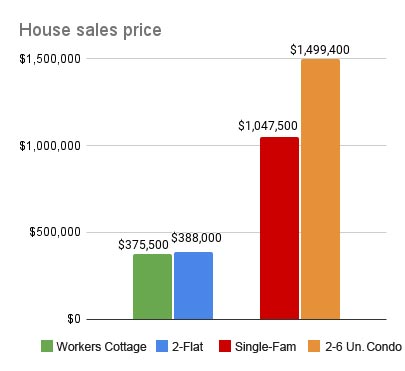
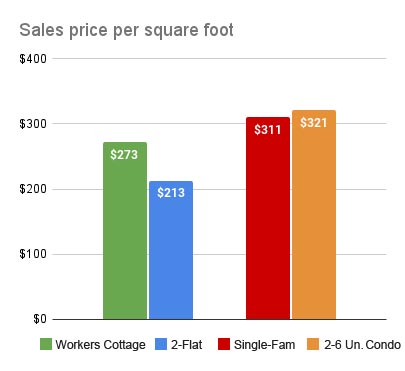
The replacement houses are much larger in square footage than the torn down cottages and two-flats. They feature newer utilities and appliances, so comparisons between the old and new buildings are challenging. But the dramatic increase in housing cost and decrease in affordability of these houses shows the stark changes brought about by teardown redevelopment rather than preservation.
